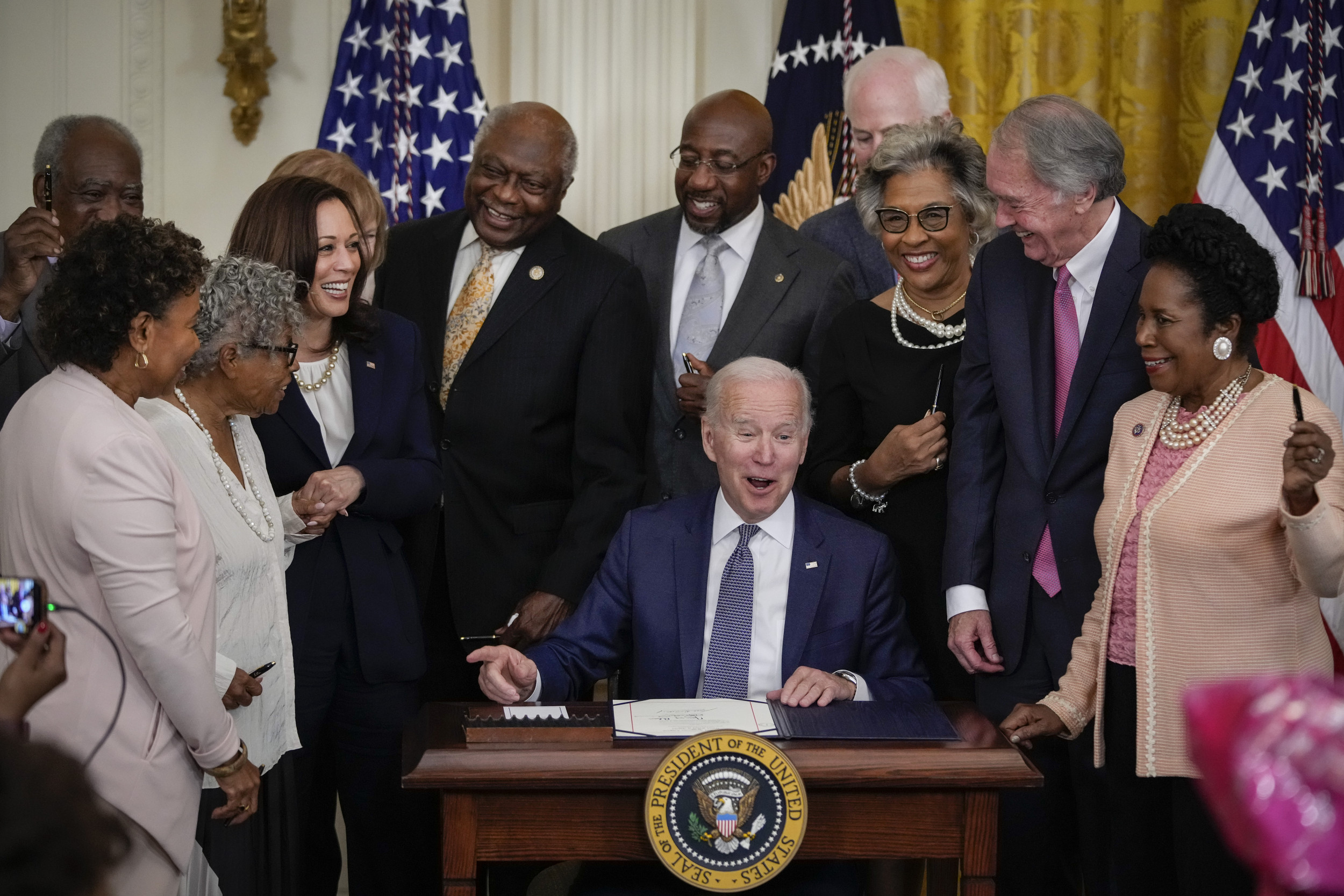Executive Order Impact

Biden freezes at juneteenth – On Juneteenth 2022, President Biden signed an executive order entitled “Advancing Racial Equity and Support for Underserved Communities Through the Federal Government.” The order aims to address systemic inequities faced by underserved communities in the United States, with a focus on federal agencies and contractors.
Key provisions of the order include:
- Directing federal agencies to review their policies, programs, and practices to identify and address systemic barriers to equity for underserved communities.
- Requiring federal agencies to develop and implement plans to increase the participation of underserved communities in federal contracting and procurement.
- Establishing a new interagency working group to coordinate efforts to advance racial equity across the federal government.
- Creating a new Equity Council within the White House to advise the President on issues related to racial equity.
The order is expected to have a significant impact on federal agencies and contractors. Agencies will be required to devote significant resources to reviewing their policies and practices and developing plans to address systemic barriers to equity. Contractors will need to ensure that they are in compliance with the order’s requirements for increasing the participation of underserved communities in federal contracting and procurement.
The order could also have a broader impact on businesses and the economy. By increasing the participation of underserved communities in federal contracting and procurement, the order could help to create new jobs and economic opportunities in these communities. Additionally, the order could help to reduce racial disparities in wealth and income by providing underserved communities with greater access to federal resources.
Potential Challenges
While the executive order is a significant step forward in addressing racial equity in the United States, it is important to recognize that there are a number of challenges that could hinder its implementation. These challenges include:
- The order is not legally binding, and it is unclear how it will be enforced.
- Federal agencies may be reluctant to devote the resources necessary to implement the order.
- Contractors may be resistant to changing their practices to increase the participation of underserved communities.
Despite these challenges, the executive order is an important step forward in addressing racial equity in the United States. It provides a roadmap for federal agencies and contractors to take concrete steps to address systemic barriers to equity. It also sends a strong message that the Biden administration is committed to racial equity and to creating a more just and equitable society.
Historical Significance and Symbolism

Juneteenth commemorates the end of slavery in the United States, marking a pivotal moment in the nation’s history. Its recognition as a federal holiday in 2021 was a significant step towards acknowledging the enduring legacy of racial injustice and the ongoing struggle for equality.
President Biden’s decision to sign the executive order on Juneteenth carries profound symbolism. It signals a commitment to confronting the nation’s history of racial oppression and working towards a more just and equitable future.
Implications for Racial Justice and Reconciliation, Biden freezes at juneteenth
The establishment of Juneteenth as a federal holiday provides a platform for national reflection and dialogue on race relations. It encourages a deeper understanding of the systemic inequalities that persist in American society and the need for ongoing efforts towards reconciliation and healing.
The executive order also includes measures aimed at addressing racial disparities in various areas, such as housing, education, and criminal justice. These initiatives represent a step towards dismantling systemic barriers and creating a more inclusive and just society.
Public Perception and Reaction: Biden Freezes At Juneteenth

To assess public perception and gauge the implications of the executive order, a comprehensive research plan is crucial. This plan involves conducting a survey to gather quantitative data and conducting interviews with key stakeholders to obtain qualitative feedback. The findings from both methods will be consolidated into an infographic, providing a comprehensive overview of public sentiment and support for the order.
Survey Design
The survey will be designed to capture a representative sample of the population and will include questions that explore:
- Awareness and understanding of the executive order
- Perceptions of its potential impact on racial justice and equity
- Level of support for the order
- Suggestions for improving or expanding the order’s provisions
Stakeholder Interviews
Interviews will be conducted with a diverse group of stakeholders, including community leaders, civil rights organizations, law enforcement officials, and business leaders. These interviews will delve into the following areas:
- Insights into the potential impact of the executive order on their respective communities or organizations
- Identification of potential challenges or opportunities presented by the order
- Recommendations for enhancing the order’s effectiveness
Infographic Summary
The findings from the survey and interviews will be synthesized into an infographic that visually presents the following information:
- Public awareness and understanding of the executive order
- Level of support for the order among different demographic groups
- Key concerns and suggestions for improvement
- Potential impact of the order on racial justice and equity
The infographic will serve as a valuable tool for policymakers, advocates, and the general public to understand the public’s perception and reaction to the executive order, and to inform ongoing discussions and efforts to address racial inequality.